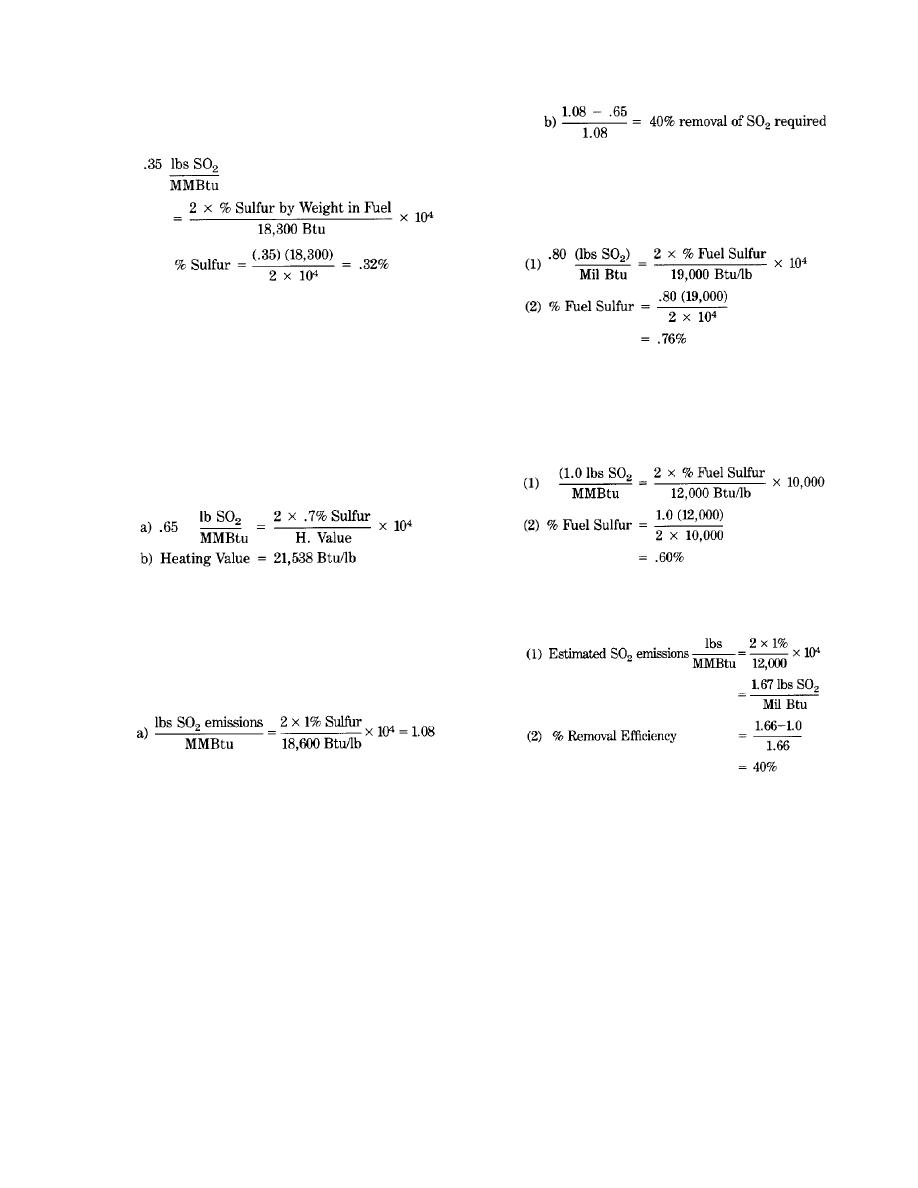
TM 5-815-1/AFR 19-6
Btu/lb for No.6 residual fuel has been
assumed. Maximum allowable sulfur content
is determined as:
d. Assume a boiler installation burns No.4 fuel-oil
with a heating value of 19,000 Btu/lb. What is the
maximum fuel sulfur content allowable to limit SOx
emissions to .8 lbs/MMBtu?
(2) Table 10-3 shows that No.5 and No.6 fuel
oils have fuel sulfur contents in excess of
.32%. If No.4 fuel oil is chosen, a fuel with
e. Assume a coal burning boiler must limit SOx
less than .32% sulfur may be available.
c. Assume a fuel-oil burning boiler must limit SOx
emissions to 1 lb/MMBtu. If sub-bituminous coal with
emission to .65 lbs/MMBtu. If No.6 residual fuel oil is
a heating value of 12,000 to 12,500 Btu/lb (see table
to be used, can SOx emission limits be met?
10-4) is to be used what is the maximum allowable
(1) From table 10-3, the minimum sulfur content
fuel sulfur content?
in No.6 fuel oil is .7%. If .7% sulfur fuel can
be purchased, the heating value of the fuel
must be:
f. Since coal of this low sulfur content is not avail-
(2) Since the heating value of No. 6 fuel oil is
able, what SOx removal efficiency would be required
generally between 17,410 and 18,990 Btu/lb,
burning 1% sulfur coal?
SOx emission limits cannot be met using this
fuel. If we assume a No.6 fuel-oil with one
percent sulfur and a heating value of 18,600
Btu/lb is used the percent SOx removal effi-
ciency that will be required is determined as:
10-10


 Previous Page
Previous Page
